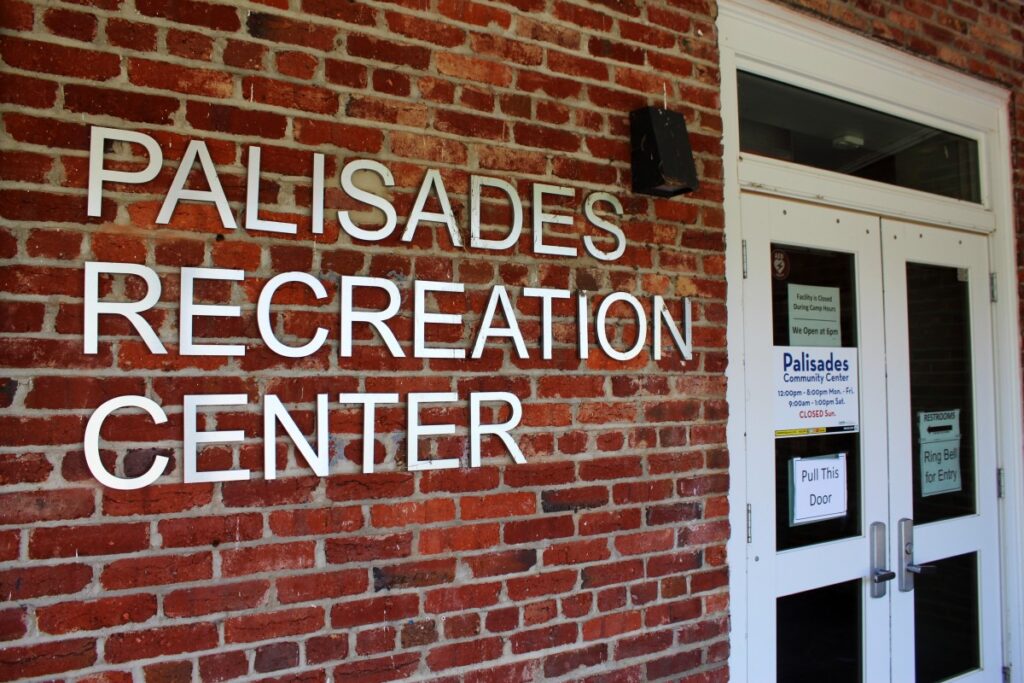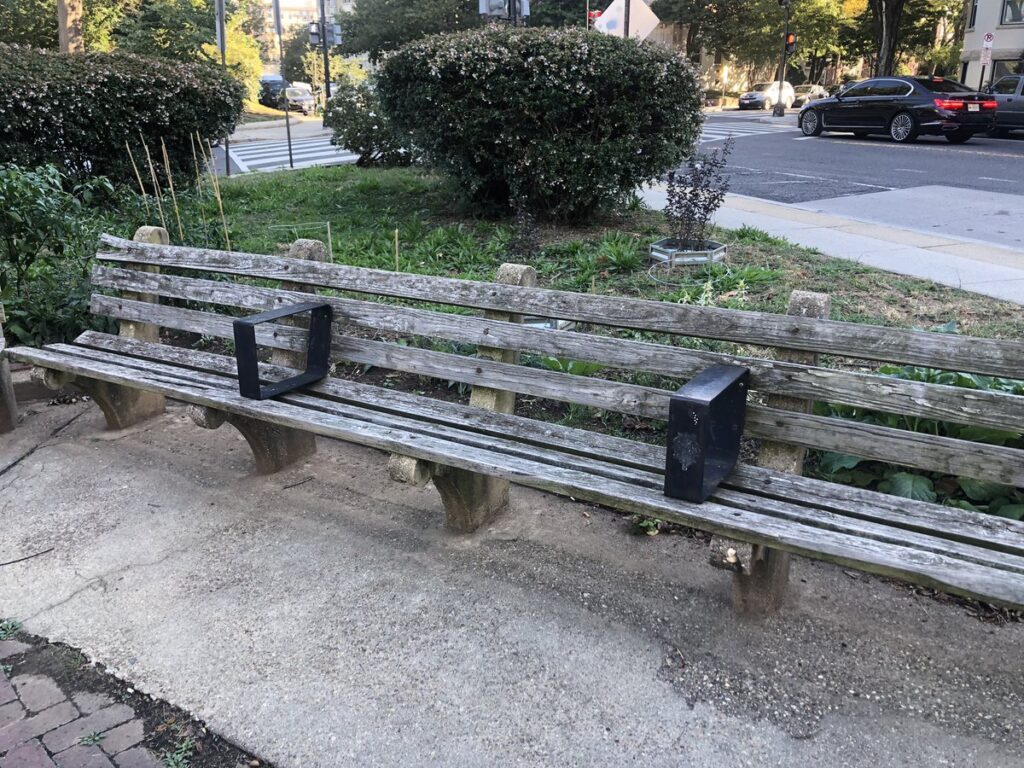T he tent Chris Cole lived in was a sauna. It wasn’t even 7 a.m. and she could already feel the sun. Her thin roof offered little protection as the temperature outside climbed to 95 degrees. She could hardly breathe. She had to get indoors.
”There’s no relief — there’s nothing you can do but get cold water,” said Cole, a Street Sense vendor who used to live outside.
On those days, Cole often headed to the Downtown Day Services Center, which operates as a cooling center for the public during heat emergencies.
For the second year in a row, Street Sense conducted an audit of cooling centers listed in the city’s summer heat plan. Up to two-fifths of D.C.’s 44 designated cooling centers are not fully operational. Those that are functioning have limited hours, and none are open on Sundays except in extreme circumstances. What’s more, eight of the 10 vendors Street Sense surveyed said they either weren’t aware of the centers or didn’t feel comfortable going.
D.C.’s temperature has hit 95 degrees — the specified threshold for a heat emergency — 23 times this summer. Mayor Muriel Bowser declared the first on May 20, and the most recent on July 27. During these emergencies, designated locations across the city are supposed to open as cooling centers for members of the public to access air conditioning, in addition to their usual function as community or recreation centers. Outreach workers check on people living outdoors and distribute bottled water. D.C.’s shelter hotline provides limited on-demand transportation to shelters with open beds.
This year’s heat plan suggests people in need of relief from the extreme temperatures visit five low-barrier shelters, 44 cooling centers, six senior wellness centers, seven indoor pools, 18 outdoor pools, 34 kiddie pools and splash parks, and 26 libraries. Shelters and cooling centers are the only facilities listed in the section of the plan that addresses resources available to people experiencing homelessness. Senior centers are exclusively for people over 60, and pools and splash parks don’t offer many cooling options other than the water.
Street Sense Media journalists called the five low-barrier shelters and 44 cooling centers listed in the plan and, after identifying themselves as reporters, asked about their availability as a place for the public to come in and cool off.
Nearly three-fifths of the cooling centers — 25 of the 44 — told Street Sense they are open during heat emergencies. Sixteen were unsure of their status as a cooling center or had some limitations, two said they were not a cooling center, and one did not respond to multiple calls. While some designated centers are not following the heat plan, more are adhering to it than last year, when only half confirmed they were cooling centers.
The D.C. Department of Parks and Recreation operates most of the 16 centers with unclear status. A department spokesperson told Street Sense all the locations are open for cooling, but employees at seven sites said people were welcome to visit but only for short periods of time. Some sites indicated that the cooling centers were open to the public only after summer programming for youth ended, around 6 p.m. Eight insisted they were not cooling centers.
Street Sense Media also spoke with D.C.’s shelter transportation hotline, where personnel confirmed the availability of transportation to shelters and cooling centers during heat emergencies.
D.C.’s Homeland Security and Emergency Management Agency (HSEMA) did not respond to requests for comment by publication.
When cooling centers aren’t operational
Regardless of the number of functional cooling sites, people experiencing homelessness don’t always have somewhere to go. In April, the D.C. Interagency Council on Homelessness conducted a review of the city’s heat plan and identified a major shortfall the city did not address with an update to the heat plan: All of the cooling centers are closed on Sundays.
“Folks in the homeless community are homeless seven days a week,” Robert Warren, a Street Sense vendor and member of the ICH Executive Committee, said in an interview. “If it’s 100 degrees on Sunday and everything is closed where you can go cool off at, and everybody is at home in their cool homes, then folks are still out there suffering.”
All of D.C.’s low-barrier shelters are currently open 24/7, but options for people who live outdoors are limited. While some libraries are open from 1-5 p.m. on Sundays, many impose a limit on bags, which means unsheltered residents can’t bring all of their belongings with them. During the heat wave over the weekend of July 23, D.C.’s three day centers expanded their operations to include Sunday hours, but that’s not a permanent policy.
There are also sparse options on Saturdays after 1 p.m. and weekdays after 5 p.m. Some cooling centers Street Sense called gave different hours than the ones outlined in the heat plan, often closing at 5 p.m. instead of the listed times of 6:30 p.m. or 7 p.m. Most heat emergencies start around 11 a.m. and last until at least 6 p.m.
“It can be 99 degrees at 5 o’clock, and you’re closing,” Warren said of the resulting disconnect. “And the sun is beaming, and people still might need to be in there, in a cooling center, until at least sunset.”
When cooling centers aren’t enough
Daniel Ball, another Street Sense vendor, has experienced periods of unsheltered homelessness in D.C. But he had never heard about the option to go to a cooling center.
“That’s the first time I’ve heard of that,” he said.
In fact, eight of 10 Street Sense vendors surveyed said they hadn’t heard of cooling centers and didn’t know where to go to find one. That could be why most cooling centers see few visitors. Sites that confirmed their status as cooling centers do not keep a detailed record of who uses their facilities, but some said no one has come in yet this summer while others provided an estimate in the single digits.
Cole found out about the Downtown Day Center at 1313 New York Ave. NW from passersby who were mutual aid workers.
People living downtown may be more likely to know about the day center, Warren said. More may have heard they can duck into a library or recreation center, but not know about specifics of the heat plan.
The city could build awareness around cooling centers by posting information near where unsheltered people sleep, Warren suggested. But he understands why some people might choose not to go to a cooling center.
The Downtown Day Center was always crowded when Cole went there, and Warren said some people worry about contracting COVID-19 since the building doesn’t have a mask mandate. Given that not all cooling centers allow people to bring belongings in, people who sleep outside are left to choose whether to cool off or keep their possessions safe. And centers that don’t normally serve people experiencing homelessness may come across as unwelcoming or even discriminatory.
Given these concerns, Warren is hoping the city can come up with more cooling options that are outdoors. One possibility, he pointed out, is to stop conducting encampment removals in the summertime – particularly in shaded areas. D.C. has conducted several encampment evictions over the last year, including one at New Jersey Avenue and O Street NW. The park there has several large trees, which encampment residents could sleep or sit under. With the encampment closed, there’s one less place for people experiencing homelessness to get cool.
Warren would like to see more outdoor spaces such as Franklin Park used to distribute cold water; Cole suggested handing out battery-operated fans as well. While the United Planning Organization, which provides help to low-income residents, already passes out water as part of its outreach, Warren said adding a few central locations would be helpful. The need is great, he said: When he’s conducted outreach during the summer, he has never come back with any leftover water.

Click here to download the above graphic for sharing.
What to do in a heat emergency
D.C. is likely to experience several more heat waves this summer. AlertDC has a portal where users can sign up to receive text messages and email updates on emergencies. Street Sense also maintains a spreadsheet and map of operational cooling centers. D.C.’s shelter hotline — reached at 202-399-7093 or 311 — can arrange transportation to a shelter or cooling center for people who may be suffering from heat exhaustion.
According to HSEMA’s publications, residents should be on the lookout for signs of heat cramps, exhaustion and stroke. Cramps are an early sign a body is suffering from the heat, according to the Mayo Clinic, and present as pains in the legs or abdomen. If experiencing cramps, rest and cool down, drink water or electrolytes, and gently stretch the affected area.
Heat exhaustion is more severe, and causes ashen skin, headaches, nausea, dizziness, sweating, weakness, fast or weak pulse, cramps and chills, according to HSEMA and ReadyDC. If suffering from heat exhaustion, rest in the shade or inside, drink water, and remove any extra clothing.
Heat stroke is the life-threatening result of ignoring heat exhaustion. The condition causes high body temperature, red skin, loss of consciousness, fast shallow breathing, confusion, vomiting and seizures, according to HSEMA and ReadyDC. If someone may be experiencing heat stroke, call 911 immediately and apply a cold compress. Do not drink water while experiencing heat stroke.
Hope Davis contributed reporting.
This article was co-published with The DC Line. It has been updated from the print version to include new heat emergencies.
Annemarie Cuccia covers DC government and public affairs through a partnership between Street Sense Media and The DC Line. This joint position was made possible by The Nash Foundation and individual contributors.








